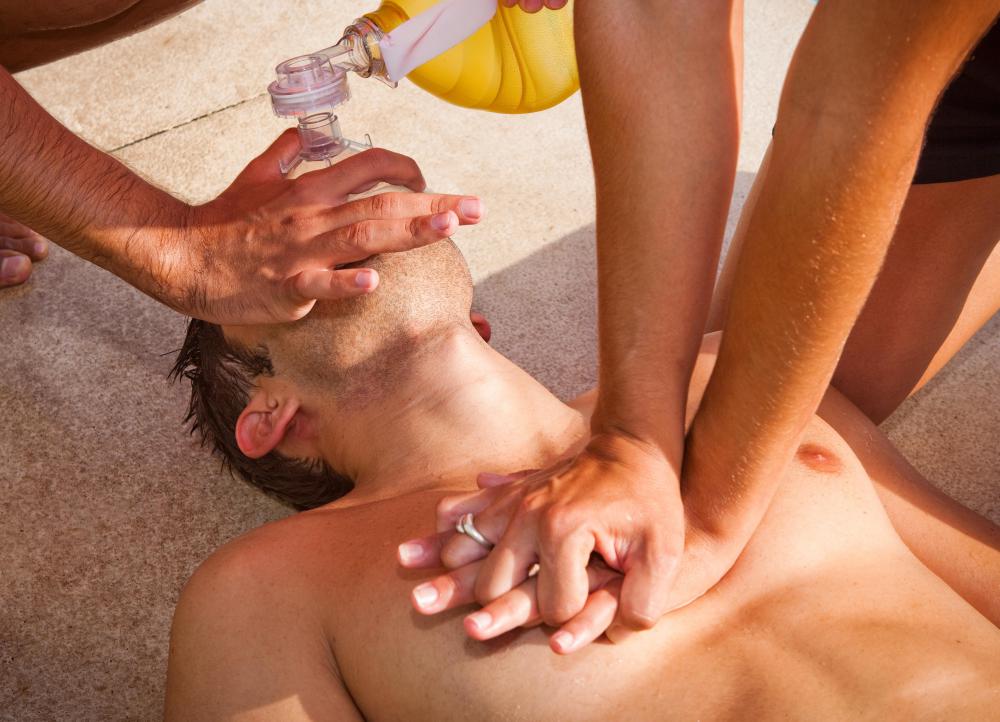At WiseGEEK, we're committed to delivering accurate, trustworthy information. Our expert-authored content is rigorously fact-checked and sourced from credible authorities. Discover how we uphold the highest standards in providing you with reliable knowledge.
What are the Different Types of CPR Manikins?
There are a number of kinds of manikins used for medical training in situations from cardiac arrest to extreme trauma resulting from an accident. Manikins that are made specifically for basic cardiopulmonary resuscitation (CPR) training generally have only a head and torso for adult models, although advanced CPR manikins are generally full-body manikins. Most adult CPR manikins are male, but female and obese male manikins are also available. Child manikins are often full-body, and infant manikins almost always are.
Basic CPR manikins have airways that open when the head tilt/chin lift portion of CPR is properly done. When air is breathed into the mouth, the chest rises visibly. Just as on a real person, the xiphoid process at the bottom of the sternum may be felt to ensure proper hand placement for chest compressions. Some models have an audible clicker when the compression pressure is correct.

Slightly more complex models have a rate monitor that gives immediate feedback about the rate of compression being performed; both instructors and students receive the feedback. Another type of feedback in some brands of CPR manikins uses the concept of stoplights. When the number of compressions reaches 60, a red light appears as a signal that compressions need to be faster. A yellow light appears when there are 80 compressions per minute. When the number of compressions reaches 100 per minute, the light changes to green to encourage the person to keep going.

More complex CPR manikins may also be used to train for advanced cardiac life support (ACLS). This level life support includes not only chest compressions and ventilation, but also endotracheal intubation, electrical defibrillation, and intravenous fluids and medications. Advanced CPR manikins are generally full body even for adult manikins. These manikins allow practice in all of these functions.
Additional features for these full-body advanced CPR manikins include adjustable chest rigidity to simulate different body builds, flexible defibrillator electrodes, and a mouth, nose and throat that allow for intubation with standard tubes. These manikins can also be given shots, and blood pressure can be taken. Each manufacturer has its own software for programming a variety of health scenarios into the manikin, giving the opportunity to train for almost any kind of illness or trauma.
Great care has been taken to make these manikins as life-like as possible. The torso manikins are more limited to keep costs down. Even these have skin that feels quite real. The advanced manikins may have a programmable eyelid blink rate, as well as pupil size and reaction time; they may cry real tears and the skin may even turn bluish or pale. All of these things and other features make it quite realistic to “treat” the manikin and, thus, easier to transfer those skills to treating a live person.
AS FEATURED ON:
AS FEATURED ON:












Discuss this Article
Post your comments